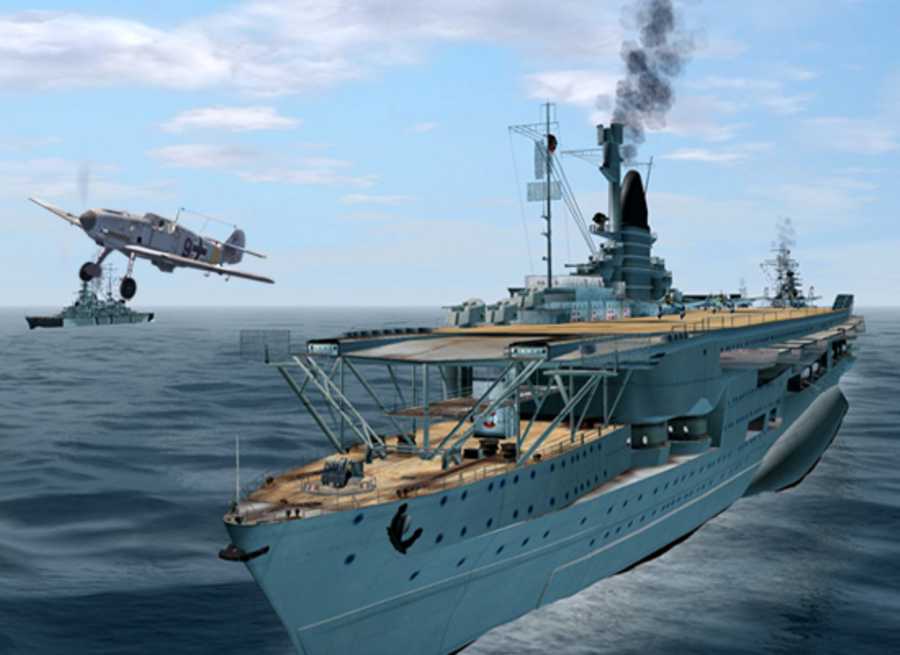KM Graf Zeppelin (CV-1936)
Back to Germanic States Navy page:
The Graf Zeppelin came from the expiry of the Naval treaties that had restricted the Germanic States in what they could build and how big it could be. The Graf Zeppelin was the Germanic States first try at building an aircraft carrier but their designers had not really taken in what was happening around the world. The only other experience they had with aircraft carriers had been the ex-passenger liner conversion they had done for Argentina. The open front flight deck configuration was quickly found to be of little use in heavy seas and a 6 month rebuild was required to fit a new enclosed bow section.
A year later the Graf Zeppelin and her sister Peter Strasser were back in builders hands for removal of the casemate 5.9" and to heighten the funnel. More AA guns were fitted at this stage. The removal of the 5.9" and the recovery of the space into the hangar and the extra space from the new bow and deck edge lift increased the aircraft carrying capacity which had been on the low side for such a large ship.
The original aircraft complement with the Me-109 fighter was upgraded to the FW-190 in 1940 with the 190's introduction. The Me-109 suffered the same fate as the UK experienced with the Seafire. The narrow undercarriage made for many deck landing accidents. The switch to the 190 gave the Navy a fighter that was certainly in advance of any of its competitors carrier borne fighters.

| Displacement | 39,500 tons std, 44,800 full load |
| Length | 919 ft (940 ft with new bow) |
| Breadth | 106 ft (122 ft over sponsons) |
| Draught | 28 ft |
| Machinery | 4 shaft mixed turbine/diesel propulsion 2 x Steam Turbines 140,000shp 2 x Diesels 60,000bhp |
| Speed | 34 knots |
| Range | 12,500 miles at 18 knots |
| Armour | 3.9" side, 3.9" deck, |
| Armament | 12 x 4.1" (6x2) 16 x 37mm (8x2) 22 x 20mm (2x4 14x1) |
| Aircraft | 64 |
| Torpedoes | nil |
| Complement | 2250 |
| Notes | KM Graf Zeppelin KM Peter Strasser |
Graf Zeppelin under construction 1934. Fw190 torpedo bomber.